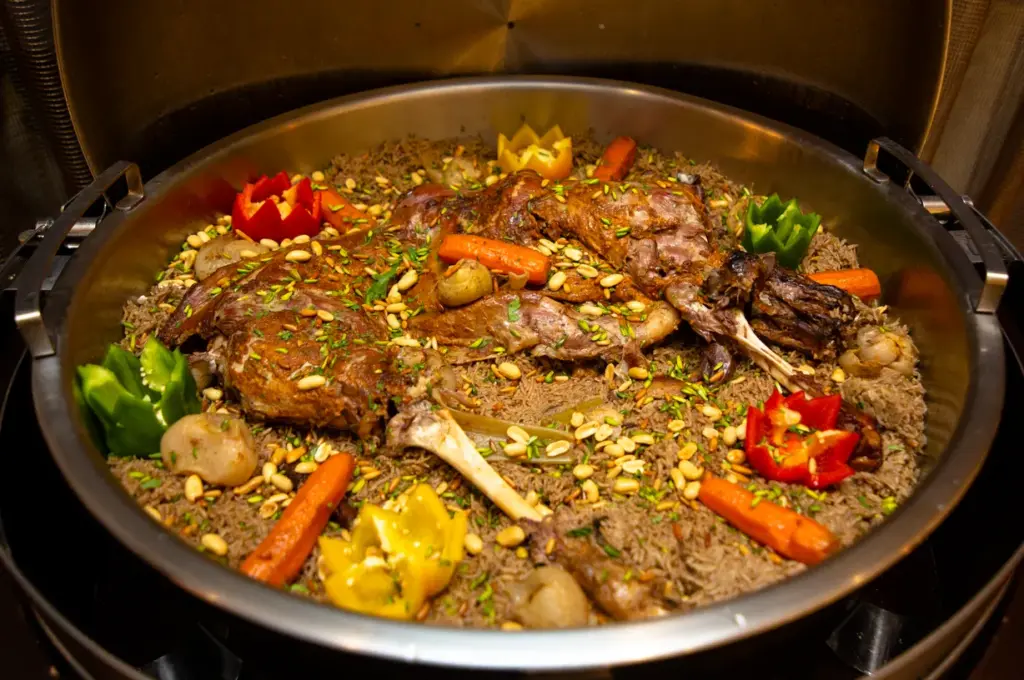Ethiopian Cuisine: The Rich Flavors of Injera and Berbere
Ethiopian cuisine is an exquisite blend of unique ingredients and flavors, offering a culinary adventure that is as intriguing as it is delicious. From the spongy texture of injera to the complex intensity of berbere, the food culture of Ethiopia is something every traveler should experience. This article explores the depth and richness of Ethiopian cuisine and why it’s a must-try for any food enthusiast.
The Staple of Ethiopian Cuisine: Injera
Injera is more than just a type of bread; it’s the cornerstone of Ethiopian cuisine. Made from teff, a tiny, gluten-free grain indigenous to Ethiopia, injera has a distinctive sourdough taste and a spongy texture that makes it perfect for soaking up the rich sauces and stews it accompanies. It’s not just a side dish but serves as a plate and utensil in traditional Ethiopian meals.
The preparation of injera is an art in itself. The teff flour is mixed with water and allowed to ferment for several days, resulting in its signature sour flavor. When ready, the batter is poured onto a large griddle called a mitad and cooked until it forms a large, round flatbread with a slightly crispy edge. This bread is then used to scoop up stews, lentils, and meat dishes, bringing a unique softness and tang to every bite.
The Spice Blend That Defines Ethiopian Food: Berbere
Berbere is the spice blend that gives Ethiopian cuisine its signature heat and complexity. Comprising a mix of chili peppers, garlic, ginger, basil, korarima, rue, ajwain, nigella, and fenugreek, berbere is used in numerous Ethiopian dishes to provide a deep, layered spiciness. This potent mix of spices is not just about heat—it also offers an array of flavors that create a complex and memorable eating experience.
One of the most popular dishes that features berbere is Doro Wat, a spicy chicken stew that’s considered Ethiopia’s national dish. Slowly cooked with onions, garlic, and chicken, and then spiced generously with berbere, Doro Wat is a comforting, hearty meal that encapsulates the warmth and richness of Ethiopian food. Served atop injera, this dish is a complete delight for the senses.
The Health Benefits of Ethiopian Food
In addition to its captivating flavors, Ethiopian cuisine offers numerous health benefits. Teff, the primary ingredient in injera, is packed with protein, fiber, and iron, and is one of the most nutrient-dense grains available. It’s gluten-free, making it suitable for those with gluten intolerance or celiac disease.
The abundant use of legumes, lentils, and vegetables in Ethiopian cooking also contributes to a balanced diet rich in vitamins and minerals. The spices themselves, particularly garlic and ginger, have well-documented health benefits, including anti-inflammatory and antioxidant properties. This makes indulging in Ethiopian food not just a treat for the taste buds, but also a boon for overall health.
The Cultural Experience of Dining Ethiopian-Style
Dining in Ethiopia is a communal experience that emphasizes sharing and togetherness. Meals are typically enjoyed with family and friends, and it’s common for people to share food from a large, central plate. This tradition fosters a sense of community and makes dining a very social activity.
Eating with your hands is another unique aspect of Ethiopian dining. Instead of using utensils, diners use pieces of injera to scoop up food. This tactile method of eating is not only practical but also adds an element of intimacy and connection to the meal. It encourages slower eating and more mindful consumption, allowing diners to fully savor the rich and varied flavors of the cuisine.
Signature Dishes to Try
While injera and berbere are the cornerstones of Ethiopian cuisine, there are several other dishes that should not be missed. Tibs, a dish made from sautéed meat, often beef or lamb, with onions, peppers, and other spices, offers a flavorful introduction to Ethiopian food. Kitfo, a dish made from raw minced beef seasoned with mitmita (a chili powder-based spice blend) and clarified butter, is another must-try for adventurous eaters.
Vegetarian and vegan travelers will find Ethiopia to be a paradise, as many traditional dishes are plant-based. Misir Wot, a spicy red lentil stew, and Shiro Wot, a stew made from ground chickpeas or broad beans, are hearty and satisfying options that showcase the depth of Ethiopian vegetarian cuisine. These dishes are typically served with a side of greens and a dollop of fresh, homemade cottage cheese.
Exploring Ethiopia Through Its Markets
To truly understand the essence of Ethiopian cuisine, visiting local markets is a must. These vibrant, bustling spaces offer a sensory overload of sights, sounds, and smells. From the pungent aroma of freshly ground spices to the colorful displays of fruits, vegetables, and grains, Ethiopian markets provide a deep dive into the country’s culinary culture.
One of the most famous markets is Addis Mercato in Addis Ababa, the largest open-air market in Africa. Here, visitors can find everything from spices and coffee to traditional cooking utensils and handmade crafts. Interacting with local vendors, sampling street foods, and observing the everyday hustle and bustle provides a unique glimpse into the daily life and culture of Ethiopia.
The Coffee Ceremony: A Time-Honored Tradition
No discussion of Ethiopian culture would be complete without mentioning the coffee ceremony. Ethiopia is the birthplace of coffee, and the traditional coffee ceremony is a testament to its enduring significance in Ethiopian society. This ritual involves roasting green coffee beans over an open flame, grinding them by hand, and brewing the coffee in a special pot called a jebena.
The ceremony is an important social event, often lasting several hours. It provides an opportunity for family and friends to come together, converse, and enjoy freshly brewed coffee served alongside snacks like popcorn or roasted barley. Participating in a coffee ceremony offers travelers a unique and intimate experience of Ethiopian hospitality and tradition.
The Impact of Tourism on Ethiopian Cuisine
As global interest in Ethiopian cuisine grows, so too does the influence of tourism on the food landscape. Many Ethiopian restaurants around the world seek to provide an authentic experience by importing traditional ingredients and adhering to classic recipes. This not only helps to preserve and spread Ethiopian culinary traditions but also introduces a wider audience to the richness of Ethiopian food.
Traveling to Ethiopia offers a firsthand experience of its culinary heritage. From dining in local restaurants to participating in cooking classes, travelers can immerse themselves in the flavors and traditions that make Ethiopian cuisine so unique. This culinary journey can provide insights into Ethiopia’s history, culture, and way of life, making it an enriching travel experience.
Conclusion: Why You Should Experience Ethiopian Cuisine
Ethiopian cuisine is a vibrant tapestry of flavors, textures, and traditions that offer a unique and unforgettable culinary adventure. From the mainstays of injera and berbere to the communal dining practices and rich cultural traditions, there is much to explore and enjoy. Whether you’re a seasoned food enthusiast or a curious traveler, diving into Ethiopian food promises a rewarding and enriching experience.
So why not take a trip to Ethiopia and savor its extraordinary cuisine? The incredible flavors, health benefits, and cultural richness of Ethiopian food make it a must-try for anyone looking to broaden their culinary horizons and enjoy a taste of one of Africa’s most intriguing culinary traditions.



